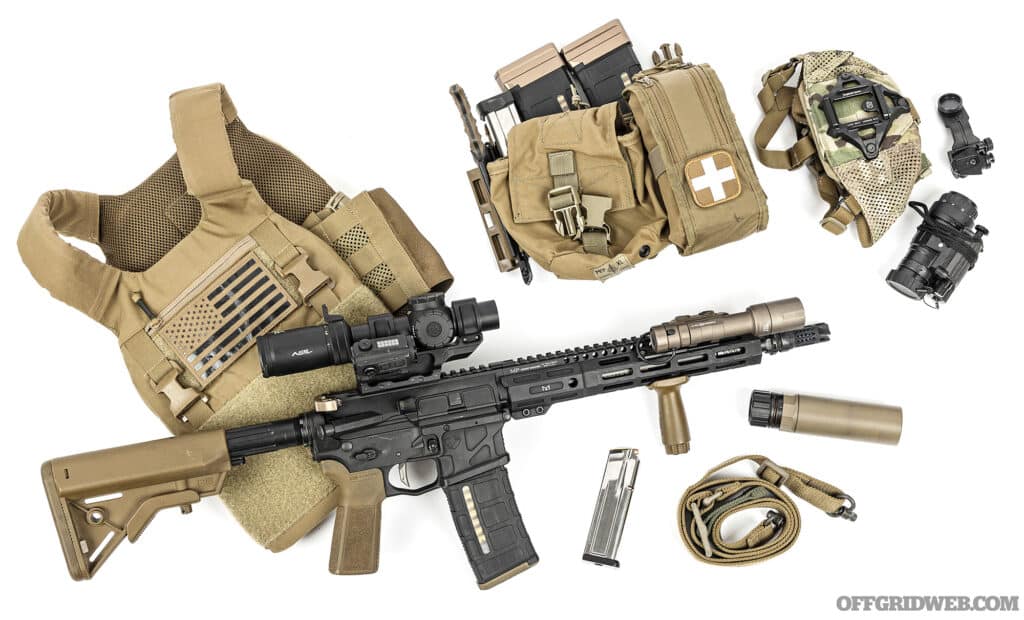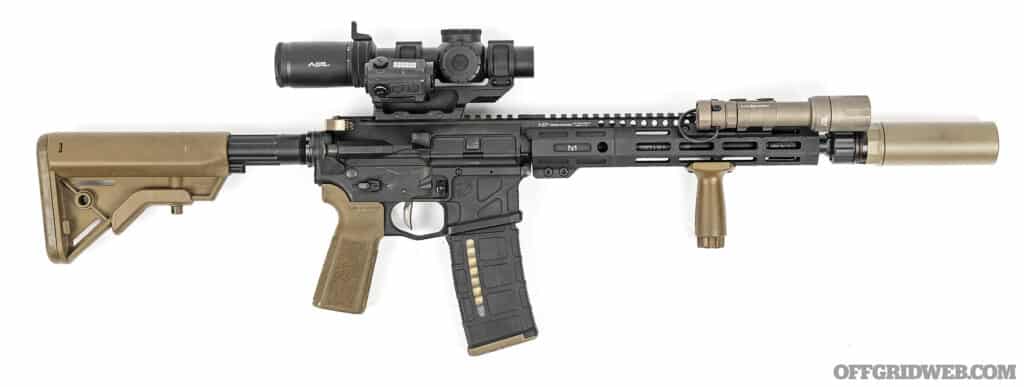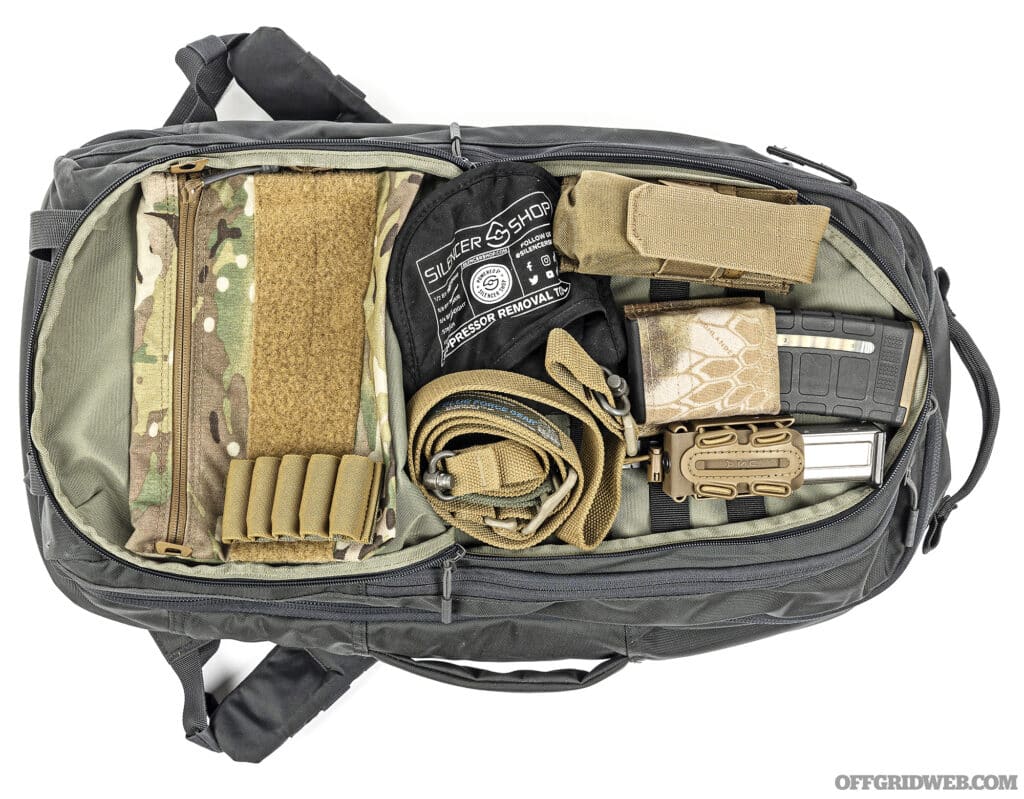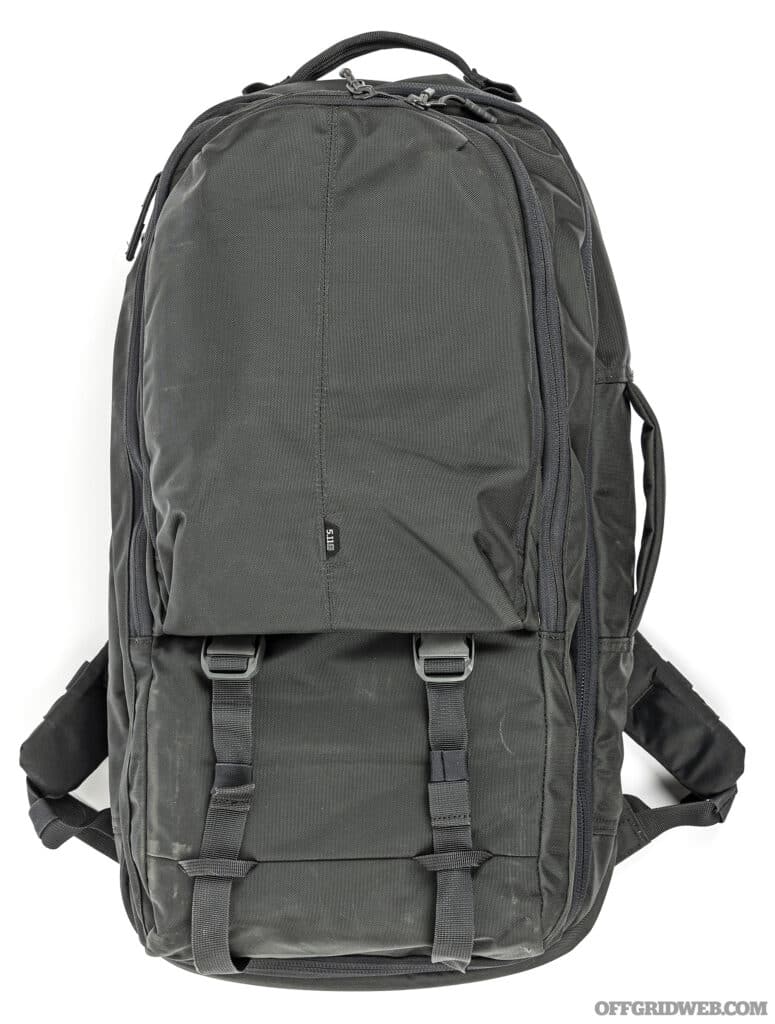RECOIL OFFGRID Gear The “Speed Ball” – A Pack Loaded for a Serious Fight
While the term has a very different connotation to recreational drug users, in the Special Forces world, a speed ball refers to a small stash of essential fighting gear that can be quickly accessed during a protracted fight. Depending on scale, they can take the form of a bag, box, or cargo pallet, but the goal is to keep the load down to the bare necessities to get through the mission. In military context, the normal ingredients include food, water, ammunition, extra grenades, or other combat sundries.
This gave us the idea to explore what the speed ball concept might look like for a prepared citizen. Assuming a baseline EDC of flashlight, knife, pistol, and an on-body IFAK or med kit, what would you need in a hurry if the situation around you deteriorated suddenly? Let’s assume a scenario similar to what several major cities experienced during the height of COVID lockdowns: a spontaneous bout of civil unrest or premeditated “mostly peaceful protest” that turns not-so-peaceful.
You might be required to travel through the area of unrest in order to get home to your family or be sitting on the couch watching TV when the angry mob moves into your neighborhood. Or you might be a small business owner looking to protect your storefront from looting. Regardless of your particular situation, we still remember watching mayors and police chiefs going on national television to warn people that “help isn’t coming,” and people calling 9-1-1 only to be put on hold. These events fall squarely into nightmare scenario territory for people who just want to be left alone.

Above: The unobtrusive-looking backpack contains this rifle, armor, chest rig, night vision, and medical gear with room to spare.
As we’ve said before and will continue to say with vigor, your personal safety (and that of your loved ones) is ultimately your responsibility in a crisis. With this in mind, we set out to build our own speed ball to explore what a fast-access self-defense loadout might look like for us. We took three major factors into consideration: the ability to scale, the ability to protect ourselves, and the ability to defend against predators who — by design or opportunity — might seek to make victims of innocent bystanders under the cloak of chaos.
We started with a 5.11 LV Covert Carry pack. This 45L backpack was designed by 5.11 to be unobtrusive and not scream “I have a gun!” It doesn’t sport any MOLLE webbing and isn’t produced in any standard tactical colors — no coyote tan or OD green versions available. Only black and two different shades of blue.
The Covert Carry has three compartments of varying sizes; the largest one includes dividers and straps to secure a broken-down AR-style rifle. Even our 11.5-inch SBR had to be separated into halves to fit in this bag. That rifle is built on an ambidextrous UIC receiver set from American Defense Manufacturing. We outfitted it with a Primary Arms PLx Compact 1-8x scope with offset Holosun red dot, both of which ride on a Scalarworks mount that has mounting points for both optics.
The stainless steel Rosco K9 barrel is tipped with a Cobalt RCB-KM muzzle device that’ll accept any suppressor with a KeyMo-style quick-release mount. A Cloud Defensive REIN 3.0 weapon light is also on-board, since many bad actors prefer the cover of darkness. The third-gen REIN is dual-fuel capable, so it’ll run on either a rechargeable 18650 cell or two CR123 batteries. The 18650 offers better output, but we packed some spare CR123s in the bag in case we don’t have the ability to recharge.

Above: This custom-built SBR features an ADM billet receiver set, 11.5-inch Rosco barrel, and Primary Arms LPVO with offset red dot.
The middle compartment includes a laptop sleeve for those who want to use this bag in a more administrative role. The laptop sleeve was stitched with two sets of seams — one to create the pocket and another parallel set that narrows the sleeve to make a snug fit for common laptop sizes. We sliced open these inner seams to use the sleeve at max width, which was just the right size for a medium plate carrier loaded with Level IV plates. The carrier is a Defense Mechanisms MEPC.
The Mission Essential Plate carrier is low profile and highly scalable. The front-and-back loop panels let you use just about any compatible cummerbund, but we chose DM’s own quick-release version with Tactik buckles that lock securely and release with a quick forward tug. There are no hard-sewn mag pouches, allowing you to run the carrier “slick” and hide it underneath a hoodie or light jacket if you only want armor protection without any load bearing. But the front plate bag also has loops for female buckles in case you want to attach a placard with more gear on it.
The middle compartment has just enough room for the MEPC itself, plus a detached placard. We went with a MOLLE placard from Dynamic Principles, which has female Tactik buckles so you can hook the cummerbund direct to the edges of the placard and keep your load snug against the plate carrier. It also includes a kangaroo pouch for magazine inserts, and an elastic sleeve on the bottom edge for a tourniquet. The kangaroo pouch has an insert that accepts two AR mags and two pistol mags.
We built out the MOLLE front with a 5.11 Flex IFAK and a general-purpose pouch from Arbor Arms. The GP is loaded with a Crye Precision Night Cap, Wilcox G24 mount, and an Armasight PVS-14. The Night Cap is a mesh soft cap with Wilcox-style shroud that will support NODs; it can be balled up and stuffed into a pouch or cargo pocket when not in use.
The PMAGs in the chest rig are retrofitted with +5 baseplates from Shield Arms. In addition to the extra ammo capacity, the extra weight will help these mags fall free faster in the event of an emergency reload. To ensure reliable feeding with the elongated mag bodies, we swapped the stock springs with +15 percent extra strength springs from MCARBO. Since the author’s EDC pistol is a Staccato C2, two full-sized 17-round 2011 magazines went into the pistol pockets, capped with anti-over-insertion basepads from Dawson Precision.
The shorter grip of the C2 allows full-size mags to be over-inserted, which can damage the ejector and induce malfunctions. Finally, we clipped a Stroup Knives Mini 2 fixed blade to the edge of the placard.
The front pouch is the smallest of the three and includes a small panel of MOLLE webbing to mount pouches inside the compartment. This was just enough real estate to mount a pouch for our Witt Machine & Tool MOD1 suppressor and a single Esstac KYWI pouch for one more 30-round PMAG. We sacrificed a third extended baseplate to keep the mag short enough to fit inside the compartment when zipped up but did make the extra power spring swap. This is advisable for mags that you plan to set-and-forget for extended periods of time. This is also where we keep the spare CR123s and a burn-proof mitt to handle a hot suppressor.

A note on ammunition: buying ammo for duty or defensive use should be a well-informed, analytical process. In a pinch, you can absolutely press your range practice ammo into service and be effective. But the amount of technology and testing that has gone into defense ammunition design over the last decade is immense, with loads tailored for all kinds of applications from barrier defeat to limited penetration to long-range precision. Take advantage of this science.
It won’t be cheap, with premium ammo often running more than $1 per round, but in a case like this where you’re only looking at $150 total, plus an extra box or two to zero your weapons, it’s a small price to pay for both peace of mind and competitive advantage when your life is on the line.
For both rifle and pistol, we chose loads from Black Hills. In 9mm, we went with a 115-grain TAC-XP projectile loaded to 1,200 fps out of a 4-inch test barrel, making it a +P load. Since our C2 sports a 3.9-inch barrel, we expect to get most of the advertised velocity out of it. Depending on your carry gun and level of skill, +P ammo may not be for everyone since the higher velocity and chamber pressure usually equates more felt recoil. But our carry gun is also fitted with a compensator.
In our experience, pistol comps function more effectively with +P ammo since the increased muzzle pressure pushes the comp to work at full potential. Since our Rosco K9 barrel has a NATO-spec 5.56mm chamber, we chose a 5.56mm spec rifle load — a 62-grain solid copper Dual Performance load. As the name implies, the Dual Performance projectile is meant to strike a happy medium between expansion in soft tissue and consistent performance against intermediate barriers.

If you gear up with everything in the bag, you’ll have 100 rounds of carbine ammo and 50 rounds of pistol ammo (two 17-round mags on the placard, plus a flush-fit 16-round mag in the gun as carried), a knife, second med kit, and night vision. We deliberately avoided using a dangler or hanging pouch on the plate carrier since we carry appendix and wanted to minimize any obstacle to a concealed draw while wearing armor. With a focus on urban defense, we did not include long-term sustainment like food or water in this bag. But we also had a little bit of room left over and could absolutely have fit a couple water bottles or meal bars in if we’d wanted to. As always, your mileage may vary, so always pack to your needs — not ours.
Subscribe to Recoil Offgrid's free newsletter for more content like this.
Editor's Note: This article has been modified from its original print version for the web.

 STAY SAFE: Download a Free copy of the OFFGRID Outbreak Issue
STAY SAFE: Download a Free copy of the OFFGRID Outbreak Issue
No Comments